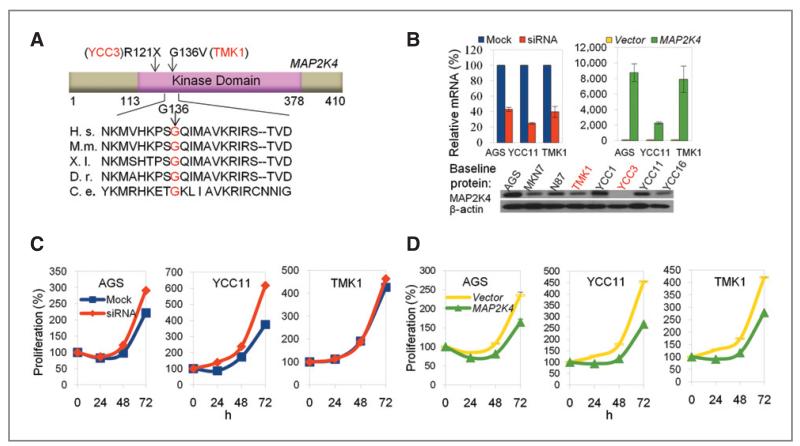Figure 4.
Functional consequences of MAP2K4 perturbation in MAP2K4 wild-type and altered GC cell lines. A, schematic representation of the domain structure of MAP2K4 and the location of the novel SNVs found in our study (arrows). The numbers indicate the amino acid residue number. Codon G136 is strictly conserved among multiple vertebrate and invertebrate species examined. H. s., Homo sapiens; M.m., Mus musculus; X.l., Xenopus laevis; D.r., Danio rerio; D.m., D. melanogaster; C.e., C. elegans. B, validation of MAP2K4 knockdown and overexpression by quantitative PCR. Western blot shows the baseline expression level of MAP2K4 across GC cell lines. Note that YCC3 cells, which contain a MAP2K4 nonsense substitution, do not express the protein. C, siRNA-mediated silencing of MAP2K4 increases the proliferation of AGS and YCC11 cells that express wild-type MAP2K4, but not TMK1 cells that carry a MAP2K4 alteration (G136V). D, overexpression of the MAP2K4 protein suppresses cellular proliferation in AGS, YCC11, and TMK1 cells.

